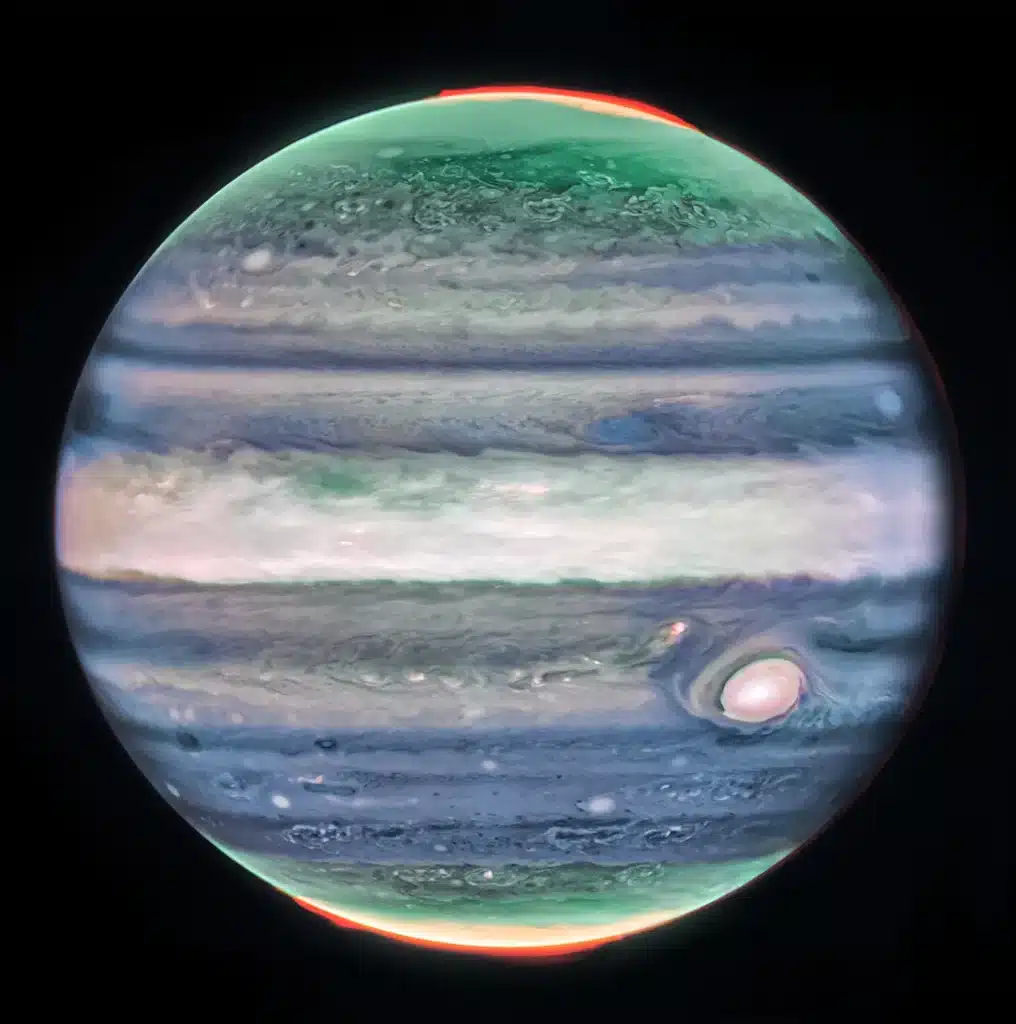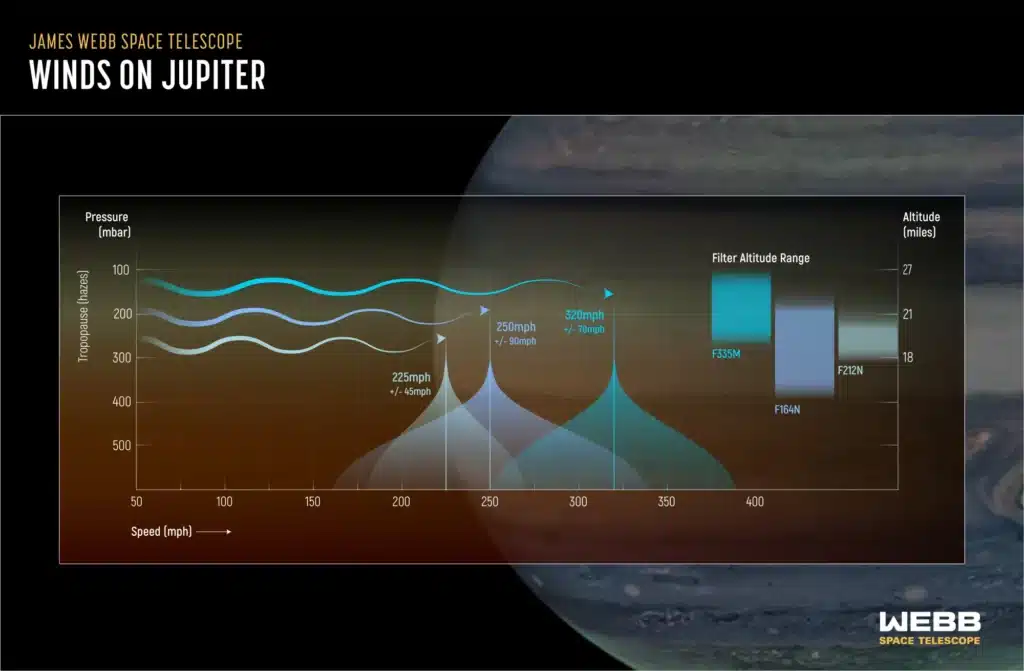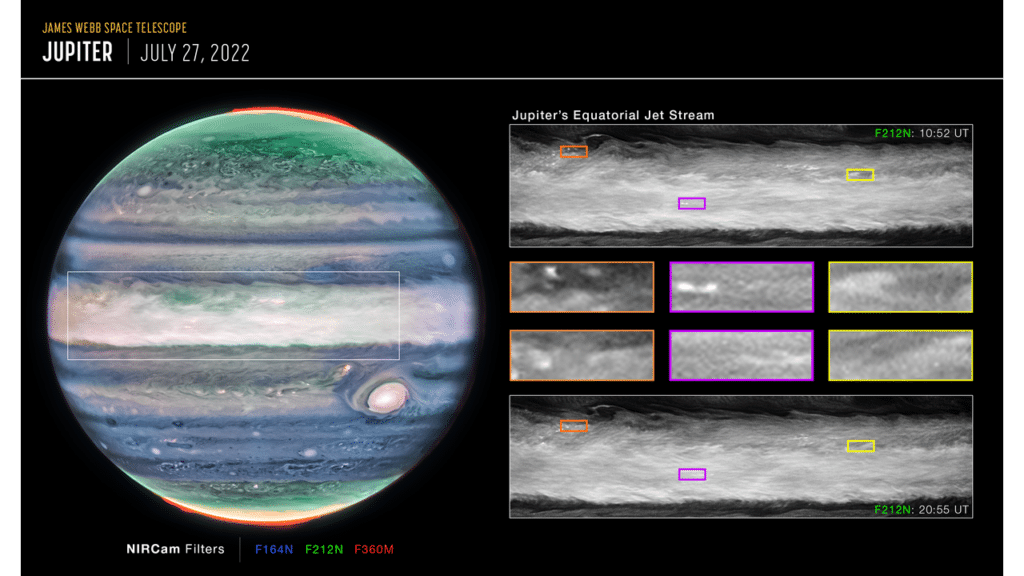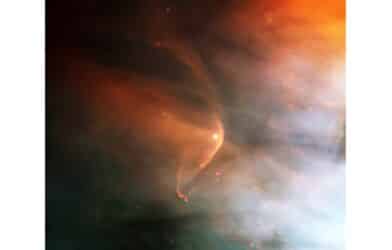An unprecedented atmospheric feature on Jupiter detected by NASA’s James Webb Space Telescope (JWST) is challenging previous conceptions held by astronomers about the giant planet’s complex atmosphere. Peering into the gas giant’s atmospheric layers, the JWST revealed a colossal high-speed jet stream, more than 3,000 miles wide, looming over Jupiter’s equator above the primary cloud decks.
This jet, cruising at a staggering speed of about 320 miles per hour—twice as fast as the most potent hurricanes on Earth—sits approximately 25 miles above the turbulent clouds, in a region known as the lower stratosphere.
“This is something that totally surprised us,” admitted Ricardo Hueso of the University of the Basque Country in Bilbao, Spain, in a statement. “What we have always seen as blurred hazes in Jupiter’s atmosphere now appear as crisp features that we can track along with the planet’s fast rotation.”
To understand the significance of this discovery, it’s crucial to grasp Jupiter’s atmospheric mechanics. Unlike Earth, a rocky planet with a relatively thin atmosphere, Jupiter is a gas giant enveloped in a deep, dense atmosphere primarily composed of hydrogen and helium, alongside other elements. This thick gaseous layer hosts a spectacle of chaotic weather patterns, including its infamous Great Red Spot, a storm larger than Earth that has raged for centuries.

The Webb telescope’s NIRCam (Near-Infrared Camera) plays a pivotal role in this breakthrough. Unlike observations in other wavelengths that penetrate the deeper atmospheres of celestial bodies, Webb’s advanced near-infrared capabilities scrutinize higher altitudes, providing a fresh perspective on the dynamic processes playing out above the more familiar lower layers of the atmosphere.
“Even though various ground-based telescopes, spacecraft like NASA’s Juno and Cassini, and NASA’s Hubble Space Telescope have observed the Jovian system’s changing weather patterns, Webb has already provided new findings on Jupiter’s rings, satellites, and its atmosphere,” remarked Imke de Pater from the University of California, Berkeley, highlighting Webb’s transformative impact on space exploration.
One of the fascinating aspects of this discovery is the phenomenon of wind shear, a concept familiar to meteorologists and aviators on Earth. It refers to the variation in wind velocity, a crucial factor in understanding atmospheric stability and the potential for developing storms. By contrasting the wind speeds at Jupiter’s higher altitudes captured by Webb with those documented by the Hubble Space Telescope at lower layers, scientists could observe these shear forces in action in a completely different planetary context.

Further observations may also unravel whether this jet stream is a permanent fixture in Jupiter’s atmosphere or a transient phenomenon.
“Jupiter has a complicated but repeatable pattern of winds and temperatures in its equatorial stratosphere,” explained Leigh Fletcher of the University of Leicester. “If the strength of this new jet is connected to this oscillating stratospheric pattern, we might expect the jet to vary considerably over the next 2 to 4 years – it’ll be really exciting to test this theory in the years to come.”
The research is published in the journal Nature Astronomy.












